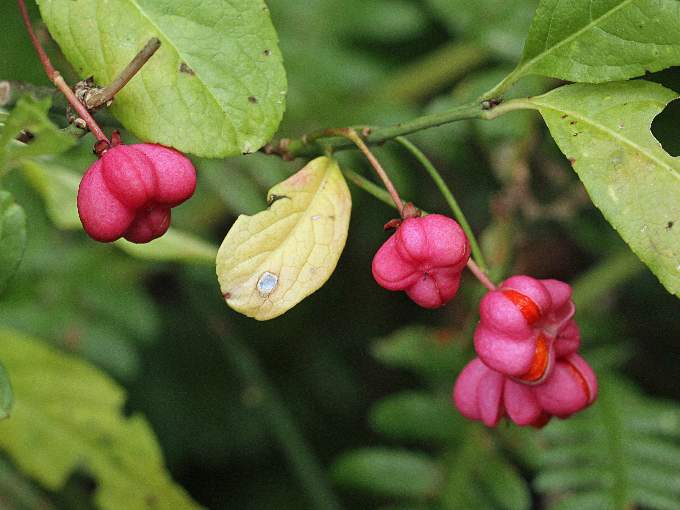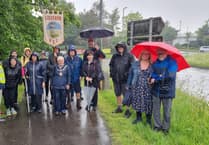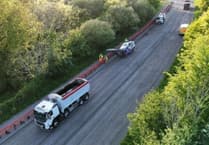Spindle trees, so useful to travelling folk in years past, are just one of the things Ray Roberts spots on a three-mile walk from his home village....
Seeing the sun was shining I took on the three mile walk from Quethiock, down to Hepwell Bridge, along the road up to Trehunist and then back to the village.
On the way down to the bridge I looked through an open gateway and noticed some white flowers on short stems with feathery leaves. These, I reckoned, were scentless mayweed – Matricaria maritima - and they were growing among turnips. This plant grows on cultivated land, such as this, and on corn stubble fields and despite its name it doesn’t bloom until July onwards.
At the bridge I turned left and walked along the narrow road that runs near the River Tiddy where the hedges and trees were finding their Autumn colours. Even the dried bracken on the hedges looked lovely. In fact lots of scrubby sycamores and hazels were showing their reds and yellows.
There were several small spindle trees growing on the hedge and some of them had red fruits that look like four round berries in a cluster. These split open to reveal orange seeds inside. Thin stems of this hardwood were fashioned into spindles, that for thousands of years before the invention of the spinning wheel, were used to spin wool into thread for the making of garments.
The wood was also used by travelling gypsies to make clothes pegs, knitting needles and meat skewers, hence the tree’s country name, skewer wood. Nothing was thrown away as the skins of the seeds were also used to make a clothes dye.
Every now and again I come across a fresh white hogweed – Heracleum sphondylium – bloom that has tinged pink petals around the outside of the flower. It seems that every time I find one, it is always prettier than the previous one.
Hogweed is a member of the Umbelliferae family and acquired its name from back when the leaves and stem were fed to pigs. During the forties we lived on what could be called a smallholding where my father kept chickens, four cows and several pigs. With my younger brother we would cut the plants and carry them home for the pigs. We called it Builder at the time and I can remember we had to wash the sap off our hands and arms as it produced a painful rash.
The small stream that runs across the road, at the ford, comes down across the fields from a spring near to Hepwell Farm and although shallow enough to cross wearing boots, there is a large piece of granite to walk across when it deepens.
Then I had to walk a mile uphill, with several stops, to Trehunist where I found some white dead-nettle flowers on the hedge and hidden away among the brambles were a couple of lone foxgloves ‘fingers’ that were just managing to hold on to their stem. Then it was almost level ground back to the village.



.jpeg?width=209&height=140&crop=209:145,smart&quality=75)
.jpeg?width=209&height=140&crop=209:145,smart&quality=75)